The ABC of Somatic Presence defines what I call the cycle of Somatic Presence. It is all about actively being. A being that is constantly shifting and redefining itself, and shaping our actions and behaviours.
In the third decade of this century we live in an age of persistent distraction. A time of increasing, and ever louder demands, which draw us out of present. We are disconnected from those we live with, learn with and work with. And from ourselves. Ironically sometimes better connected through our technologies to others on the others side of the world, than those we are in the same room as.
This collective distraction is now reflected in the growth of moment-based wellbeing and alternative health solutions. We are all crying out to find that which we have lost, or should I say allowed to be taken from us. We are in love with being connected to the world, yet find ever less time for “here and now”, and seek new tools and practices to aid our reconnection.
One way to consider this reconnection, is to re-establish the how, why and where of our being; what I am defining of as somatic presence.
We are not alone
Individual effectiveness is social.
Isn't that an oxymoron? No, I put it out that we are at our most productive when we work together. We feel our best when we are loved. We understand the most about our performance from the feedback of others. As social beings we are hardwired to connect, co-operate, console and co-regulate.
Social connection is not just words. It is a physical interaction, rapport is established when our bodies and movements are inter-personally congruent. When both beings are fully present for each other, it is somatic, it is both our minds and bodies. Effective interaction is built on a foundation of the physical and sensual information which engages the whole being, the somatic, from the Greek soma meaning “body”.
The somatics of presence and social interaction exist at the penumbra of our awareness. Often residing at best in the twilight zone of conscious awareness? Most of us only aware of our body and its messages when we injure ourselves.
But it does not need to be this way. Re-opening our awareness to the whole self, and the impact of that whole self on others, brings things back into view. I am drawn to the idea of somatic coach Paul Linden who coined the term embodied peace-making. It describes the subtle unconscious positioning which occurs between interacting individuals. A slow and intuitive embodied dance which seeks to create and sustain social harmony. Albeit an unconscious one.
Presence is about making a conscious connection to that dance.
The music of the spheres and the constant dialogue
Plato described the harmony of the music of the spheres in both Timaeus and The Republic. The spheres in question were the celestial bodies of our solar system. And the music, the harmonic resonance generated by the motion of those bodies around the heavens.
If we were take Plato's point as correct and the planets are making this music, why do we not hear it?
Well an answer might be: that sound has been there since were born, actually from our conception, it is a background noise to which we are so normalised that we simply do not hear it; no more than we feel the air as it passes through our lungs, but still we know it does.
This music serves as a metaphor for our somatic awareness, our bodies are constantly communicating with our brains, but do we hear it? If we are to stand a chance of hearing we need to recognise the communication. I propose this communication as three-fold, let's call them the "Three Voices":
- Proprioception - the knowing of where each part of our body in space, and relative to other parts of our body.
- Interoception - the understanding of how our internal systems and organs are functioning
- Neuroception - the intuitive understanding of physical safety (defined by Stephen Porges in his work on The Polyvagal Theory)
To hear Plato's music we would need to know how to hear it, but for our bodies we know where to look to for the messages. I sometimes refer to it as the opening of doors that have previously been closed to our conscious mind.
Defining the challenge
The challenge is to hear the three-voices. Actually not just to hear them but to also engage with them. Real presence is a practice of constant transformation. Subtle shifts, an ongoing constant change and adapting. It is a conscious engagement with the communication of the three-voices.
The problem is that most of us are unconsciously engaging those voices, and as a result often unconsciously engaging associated habits and behaviours.
Every moment of every day is a dance whose steps reflect the ever changing responses to situation and interaction. Presence is a continuous exchange between ourselves and those circumstances. A constant cycle of unconscious calibration which facilitates authentic and appropriate behaviour.
The question is can we engage with this cycle? Can we train it consciously?
The first step is awareness. Awareness of the three-voices and how they react to environment, situation or interactions and how they then drive action and behaviour.
We need to build a mindful awareness of where we are, what we are doing and why. This enables us to establish a clear and objective understanding of what is needed in response to specific situations and circumstances. Then we set the intention to act. To recognise how we establish and embody the state and actions there required.
And so we create an authentic presence, one which grows from within, shaped by our observation of what is going on in the moment, within us or without – whether alone, with friends or in the workplace.
There are three steps which we follow, that we pass through and cycle around, restart and continue. Forever calibrating how we are, what we are doing and how we are sharing ourselves. I call this The Cycle of Somatic Presence.
THE CYCLE/ABC: Awareness
The foundation skill is to establish a clear and non-judgemental situational awareness, How we are, how others are, and of the circumstances of any challenge that we face.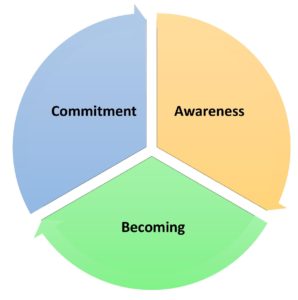
We start by developing a personal quiet openness, a state from which to observe without interpretation. To see ourselves, others and situations as they are. We learn to observe without interpretation or narrative. We do this through working with our three-voices, hearing (of feeling) how they communicate with us and understanding what this means and what behaviours they drive.
To facilitate this we need still our minds and ground ourselves in our breath. or by centring within our body.
The learning is to be aware of all that which is within and around, to understand and perceive the connection. Not striving to change, nor to fix or resolve. Just to see what is as it is. Seeing what is happening. And checking with our bodies, to see how we are in context.
Where there are others involved, we might where appropriate further our observations via open questions and clean language. Being curious of what exists beneath the surface, i.e. beneath the observed behaviour. Behind the observed behaviour we might understand the individual need. Letting go of our judgements or first impressions.
We are gathering information. Simply allowing an intuitive understanding to coalesce, not by framing, leading or directing it.
THE CYCLE/ABC: Becoming
Becoming arises in stillness. A stillness that is held in silent equanimity.
That stillness enables us to perceive clearly and without judgement, a perception of sensational authenticity, rather than processed interpretation. Allowing ourselves to settle into how things are (as long as it is safe or appropriate to do so). Thus we connect and engage with the moment.
The situation or circumstance is now embedded within us. In that moment, we are at one with the situation, immersed with the felt sense, in this space a balanced situational empathy can form.
In this stillness we open to not just what our three-voices are telling us, but what they are saying might be an appropriate action. What are we experiencing as we are with that moment. What do our senses tell us? Does it resonate somehow for us? There a socially connected response takes shape. One that has meaningful value and benefit beyond our personal need or habitual reaction.
A balanced response takes shape and we become our response.
THE CYCLE/ABC: Commitment
Lastly there is the action. The appropriate situational response that we commit our bodies to.
We are committing ourselves to that which the situation requires. That commitment is the embodiment of the most situational appropriate version of ourselves, as is the arising behaviour.
Embodying the change or state that is required to facilitate what is required. We create the shape that we need to be. We gently move but with clear and sensitive purpose, stepping from simply being within the experience to active interaction.
The hard bit is ensuring that we do not let our “heads” get in the way, or divert or distract us with sign-posts of personal interest. We aim to hold ourselves in that behaviour or action, delivering a response held in constructive and positive intention.
As soon as we act then the tree-voices speak again, they seek feedback and look to understand how appropriate our resulting action actually was. Sustaining an emotional physical and social connection with what is around us, invites us to consider the appropriateness of the action, and perhaps reshape; and the recycle restarts.
Being fully present in our action, and enacting with an appropriately embodied purpose throughout, is a cycle of life.
Living within the continuing shift
All of this can occur in the blink of eye, but we can still connect. Or we can extend the process to form part of an expansive meditative practice.
Either way, the moments move on so does the cycle. As do messages from the three-voices. As the moment shifts then so must we if we are to remain present. The subtle transformation continues; and our presence manifests as a constantly shifting embodiment of the appropriate engagement.
The more we work with the cycle, the more we understand it's voice and the more we trust its communication. The more we do this, the more we learn. The more we practice the cycle of Somatic Presence, the better be become in working with it.
Nature is no absolute; neither are we. Presence is the authentic and shifting response to circumstances. And so with awareness we shift, our behaviour embodied responses calibrated within the cycle of Somatic Presence.
We are social beings and presence is the foundation of that social connection. It is a living connection to the here and now, rather than the undirected wandering between the loudest calls of distraction which surround us.
The cycle of somatic presence establishes the authentic non-judgemental awareness and so facilitates effective and sensitive connection with ourselves, with others and with situations.

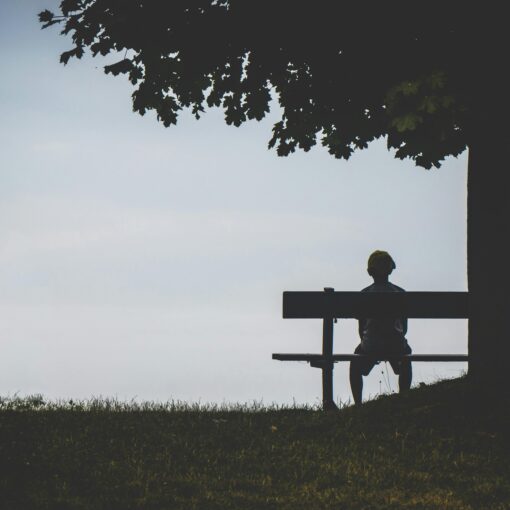
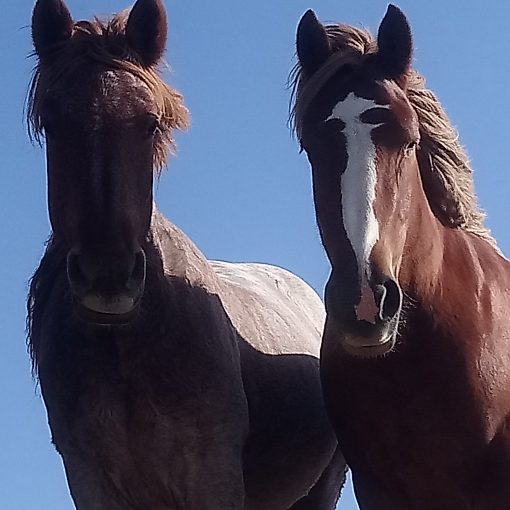
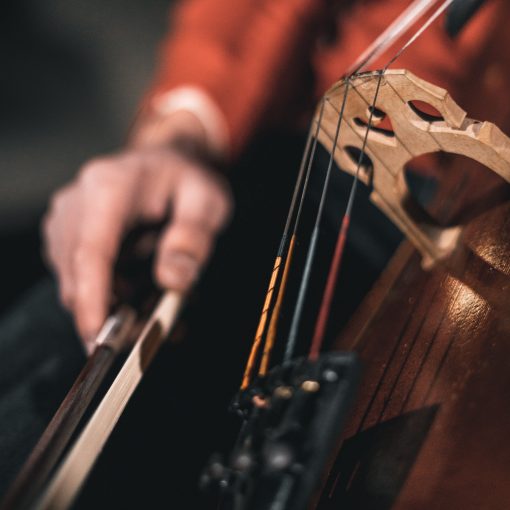
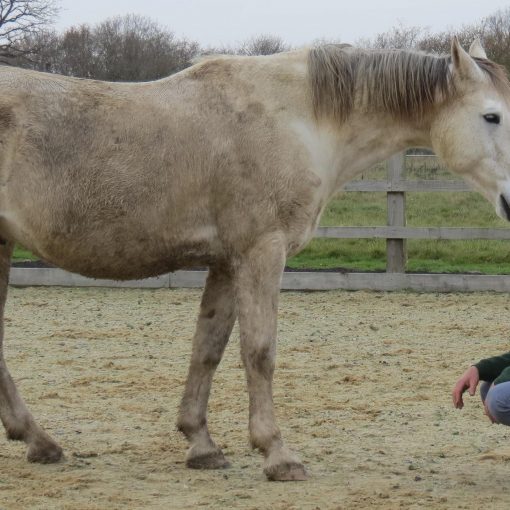
One thought on “The ABC of Somatic Presence”
Lovely article Graeme. I’m a world of noise this article feels like a ray of that music of the spheres coming in to our awareness